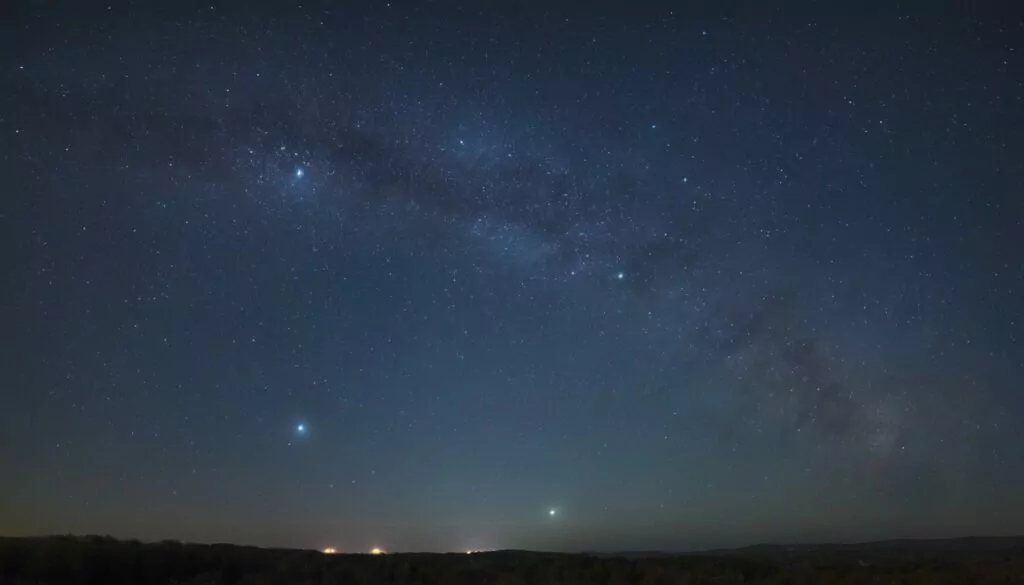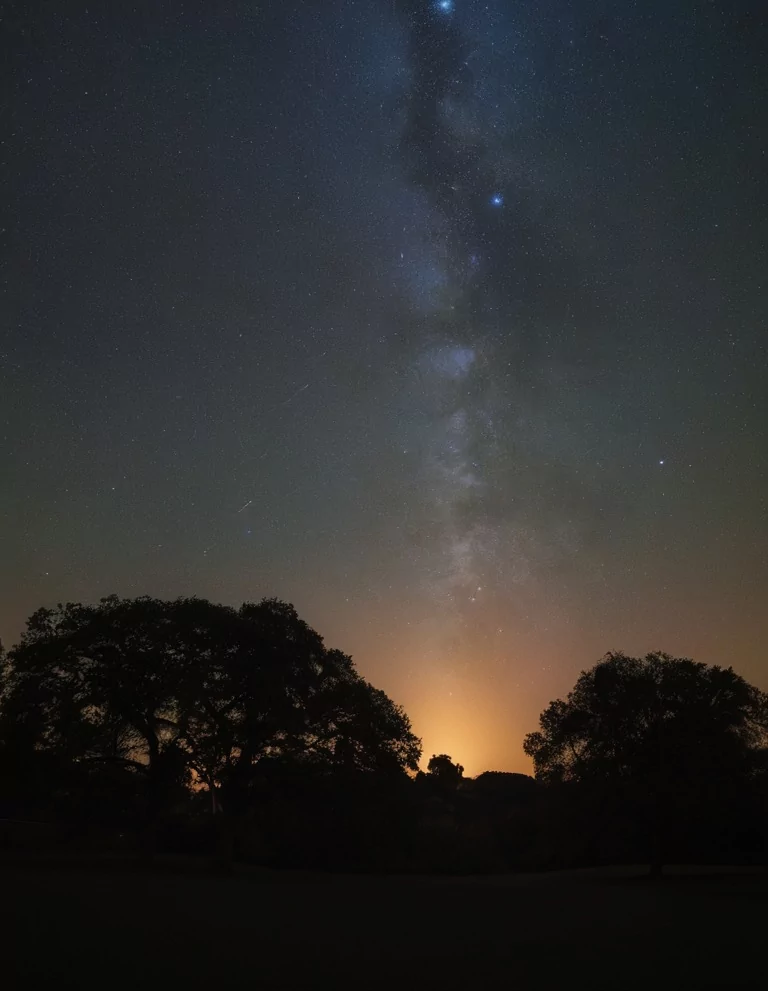
Interesting facts about stars:
A star is a large hot cosmic body that consists of gas and emits light. Light is emitted due to the process of nuclear fusion in the star’s core, as a result of which hydrogen atoms are converted into helium atoms. This leads to the release of a large amount of energy in the form of heat and light. This is interesting: Why are stars not visible during the day?
Stars are the most important in the Universe, as they generate heat and light for planets. Stars also produce heavy chemical elements from which solid objects, including planets, are formed.
It is important not to confuse stars with planets. Although celestial bodies and planets may look the same to the naked eye, there is a difference between them.
How are stars different from planets
- Stars are a source of light, and planets can only reflect it.
- Stars cannot be inhabited.
- Most stars are much larger and always heavier than planets.
- Stars have a certain life cycle, and planets exist until they are destroyed by something outside.
- Stars consist only of gas, and planets, in addition to gas, can contain rocks.
- The atmosphere of stars includes hydrogen and helium, and planets can also contain nitrogen, oxygen, and carbon dioxide.
- Stars have a higher surface temperature than planets.
- Stars revolve around the center of the galaxy, and planets revolve around stars.
Parameters of stars

Stars look like little fireflies in the sky, but they only seem that way because of their great distance from our planet. The distance to the nearest star, excluding the Sun, Proxima Centauri, is about 4.24 light years. And the distance from Earth to the Sun is only 8.5 light minutes.
In the solar system in which our planet is located, the Sun is the only star. Without its heat and energy, life on Earth would be impossible. The diameter of the Sun is about 1.4 million kilometers, and it is about 109 times larger than the Earth. Compared to our planet, the Sun seems like a real giant, but among other stars its size is very small. For example, the star Betelgeuse, one of the largest stars that can be seen with the naked eye, is 700 times larger than the Sun.
During their existence, stars go through certain stages. They are formed in molecular clouds, then for a long time they are in the main sequence state. At this stage, which takes up to 90% of the star’s life cycle. The source of energy is thermonuclear reactions in the core. At the end of their journey, depending on their mass, stars can turn into different objects: some become white dwarfs, others – neutron stars or black holes.
According to the physical parameters, stars differ in size: radius, mass, radiation and surface temperature.
Stars are divided into four types by size:
- Ordinary (similar in mass to the Sun)
- Dwarfs (their mass is much less than the Sun)
- Giant (tens of times heavier than the Sun)
- Supergiant (the mass of such stars exceeds the mass of the Sun by hundreds of times)
The mass of stars changes throughout their life cycle. This occurs due to the conversion of hydrogen into helium. As well as due to stellar wind or absorption by a companion star. The latter is possible if the stars rotate in close orbits. Due to gravity, gas can be dragged from one star to another.
Why and how stars shine

Stars are the only cosmic objects that emit light.
Starlight is visible electromagnetic radiation that comes from stars other than the Sun. It can be observed from the Earth’s surface at night.
All stars have different temperatures and colors. The temperature depends on the level of energy radiation and the size of the celestial body. That is, the surface area that radiates heat. And the color of a star is determined by its temperature. The hottest stars shine with blue or white light. And the colder ones with yellow, orange or red.
The coldest stars are red. Their temperature is 2500-3800 C.
The temperature of orange stars is 3900-5200 C.
Yellow stars heat up to 6000 C. The Sun is a yellow star, its temperature is 5500 C.
The temperature of white stars is 7000-10000 C.
Blue stars have the highest temperature – from 10,000 to 30,000 C.
When we look at the stars, it seems that the stars are twinkling. In fact, this is an optical illusion, and the stars do not twinkle. This effect occurs because we look at the sky through the atmosphere. Which consists of many layers. When starlight passes through these layers, it is refracted many times, which affects our perception. The distortion of starlight caused by irregularities in the layers of the atmosphere is called scintillation.
Why are stars not visible during the day

Stars shine 24/7, but you can only see them at night. This is impossible during the day because of the Sun. Due to its close distance to the Earth, its light is so bright that it completely absorbs the radiation of other stars, and they become invisible to humans.
Other factors also affect the visibility of stars:
- Light pollution: in large settlements there is a lot of artificial light. Which prevents you from seeing the stars in the sky.
- High humidity, dust, fog, clouds and other atmospheric phenomena also interfere with visibility.
- Observation location. There are stars that can only be seen from the northern or southern hemisphere.
- A full moon can also interfere with observing the stars, since during this period the Moon drowns out the light of dimmer stars.
- The time of year also affects visibility due to the rotation of our planet around the Sun. August is considered one of the best months for observing stars and stargazing.
Anecdote of the day from the funster.top website:

A wife ran into her husband in a shopping mall on Valentine’s Day.
He was carrying a luxurious composite author’s bouquet in his hands.
Wife:
– I hope this is for me?
– Now it is, – a female voice sounded from behind.